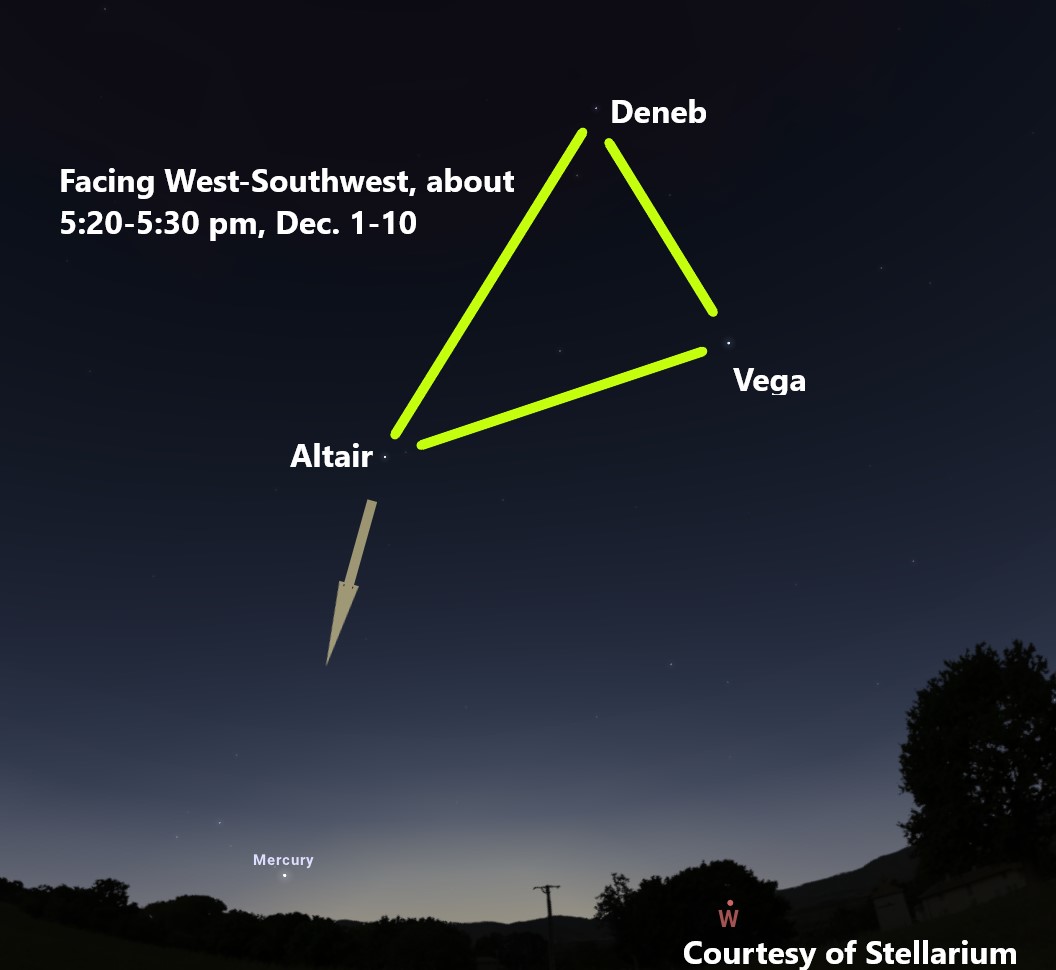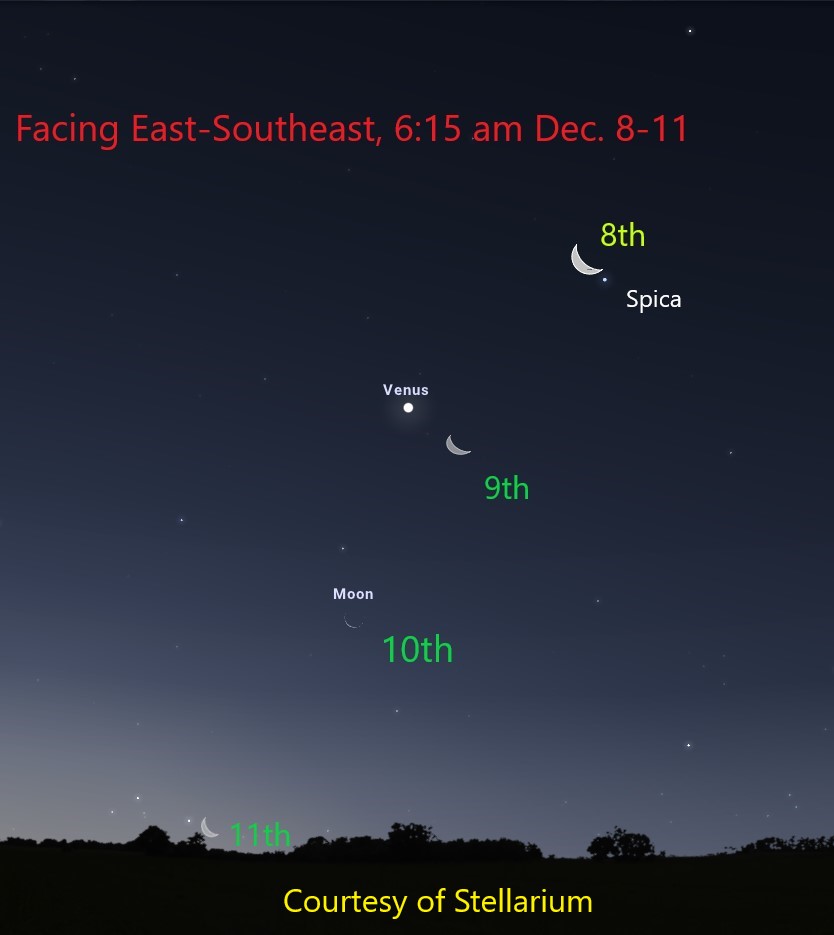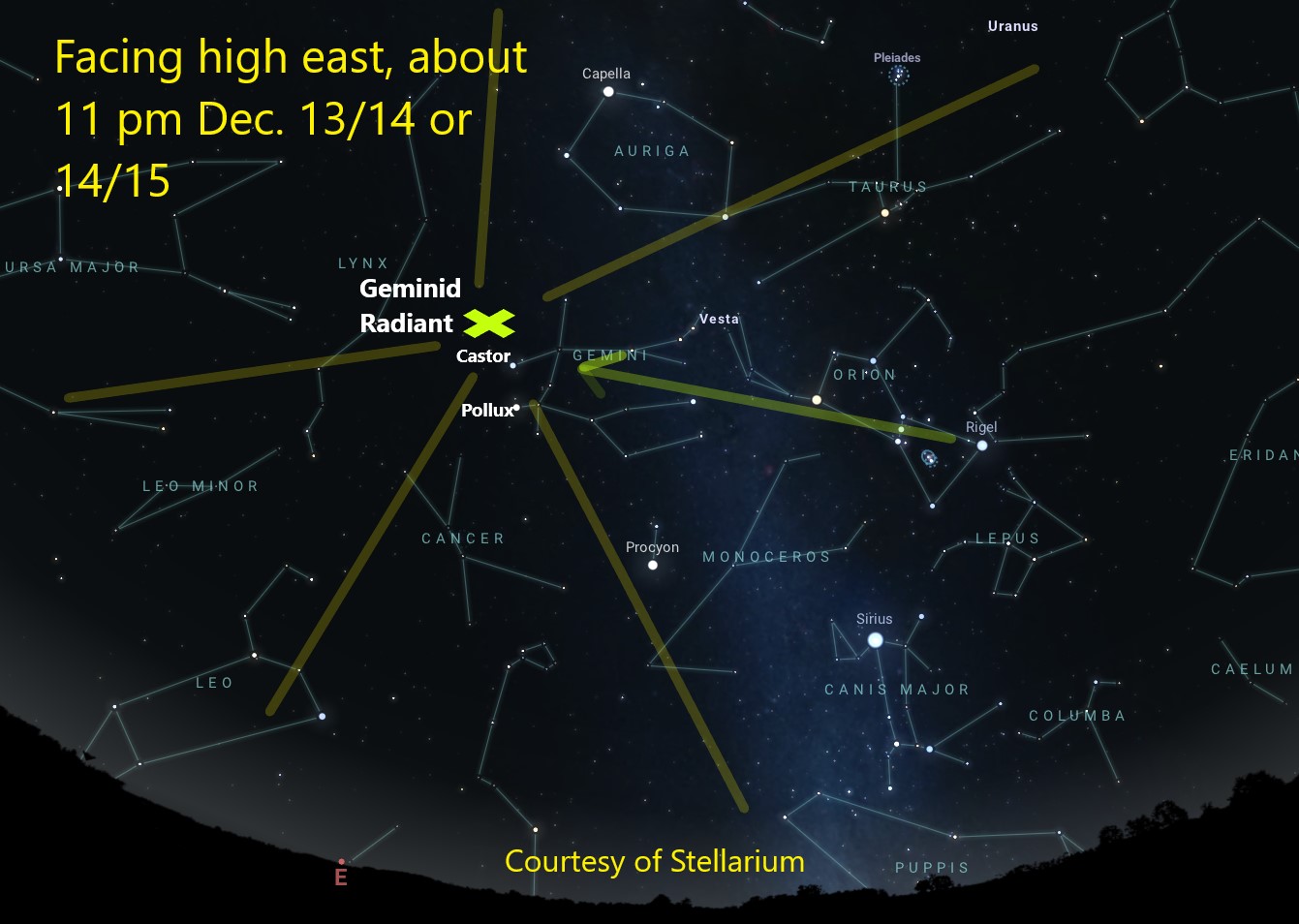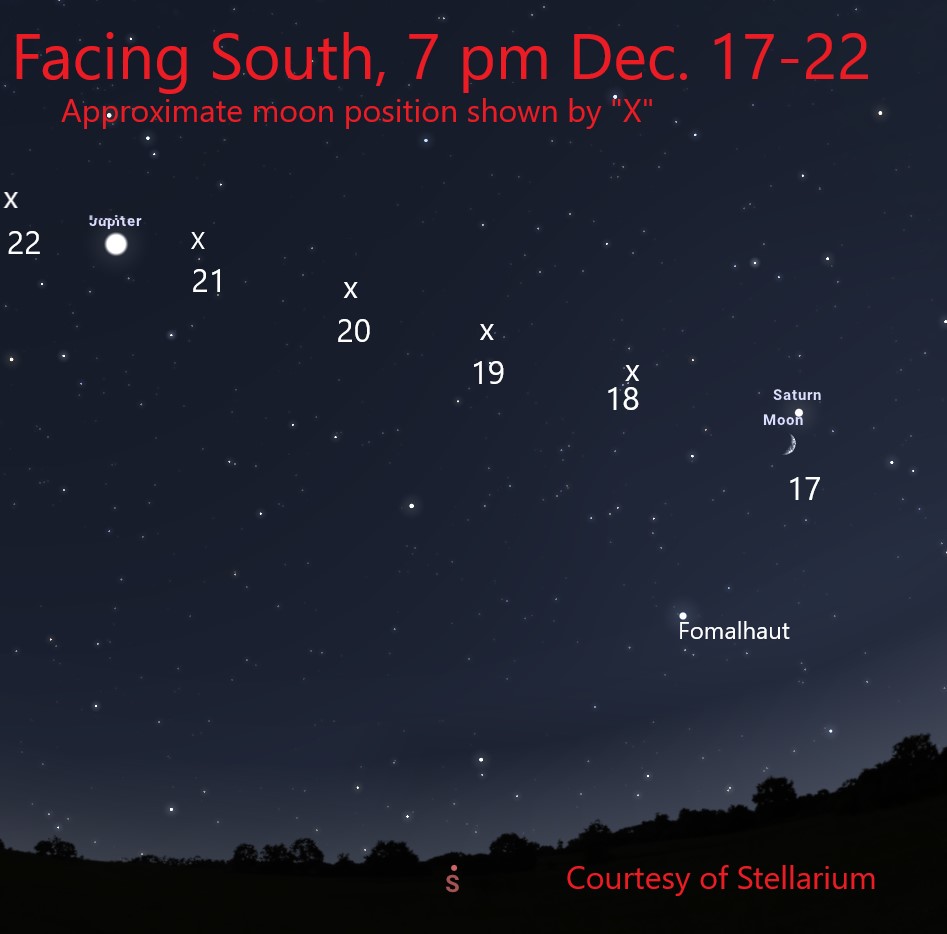HOLIDAY SKY TOUR
The night skies this month offer a fine array of celestial sights, ranging from good groupings of the moon and planets to what is probably the finest meteor shower of the year.
December 1-10: The fun starts in early December, when Mercury, the innermost planet, can be found low in the west-southwestern sky about 30-45 minutes after sunset, or about 5:20-30 pm here in St. Louis. If you are not local to here, look up the time of sunset in your area. Find a spot with a view open to the horizon, and bring binoculars along if you have them. Look for the three stars of the Summer Triangle in the west- Deneb highest, Vega brightest, and Altair to the left. Look far below Altair and slightly to the left, scanning with binoculars for the only visible “star” in the area close to the horizon, through the orange dusk. This will be Mercury- if you can easily see it in binoculars, give it a try with your unaided eye if the night is quite clear. The best visibility will be a few days either side of the 6th, as shown on the map below. Due to its rapid orbit around the Sun, there are usually three evening and three morning opportunities to view Mercury every year, each lasting a couple of weeks. However not all of these are good as seen from the northern hemisphere. This apparition is above average but not great- if you are having trouble spotting it this time, try again in March, when visibility will be about as good as it gets.
 Mercury glimmers low in the southwestern twilight in early December
Mercury glimmers low in the southwestern twilight in early December
December 8-11: With winter about to begin, the sun rises late, making predawn stargazing much more practical at this time of year. Venus is the super-bright starlike object in the eastern sky all winter long, with the bright star Spica to the upper right. The waning crescent moon, appearing skinnier and lower with each passing morning, will be visible in the area during this time- whisker-thin on the morning of the 11th, weather permitting. Use binoculars to discern earthshine- the outline of the unlit part of the crescent moon, faintly illuminated by sunlight reflected from the Moon to the Earth, and then back again.
 The crescent moon passes by the star Spica and brilliant Venus in the December dawn sky
The crescent moon passes by the star Spica and brilliant Venus in the December dawn sky
December 13/14 & 14/15: The Geminid Meteor Shower in recent times has usually been the richest in numbers of the year. They are much less well known than the Perseids of August due to the colder temperatures, but well worth seeing if you bundle up. The Geminids promise a particularly good show in 2023, as the thin crescent moon will set early in the evening and not interfere. Unlike the Perseids, when few meteors appear before midnight, the Geminids can be seen during the late evening hours, as the radiant point (where the meteors appear to come from), rises higher in the sky. Although as many as one or two meteors per minute can be seen from dark country sky locations, the numbers visible drop dramatically if you are viewing from close to the city. Still, if you are patient and watch for long enough, you should be able to see at least some meteors. Note how a line through Orion points towards to the radiant. If you see a meteor, if you follow the path backwards, it should appear to come from this spot. The best direction to look is a few hand widths away from the radiant, where the sky is darkest (usually overhead). Relax and try to watch a wide area of the sky. Due to the very cold temperatures that are likely in mid-December, it will be very important to layer up with warm clothing, including a hat, gloves and layers for your feet, which tend to freeze up first. Try laying out on a lawn chair or beach blanket, covered by blankets. If you get too cold, go inside your house or car for a few minutes to warm up, keeping the lights off so that you stay used to the dark. If the night of the 13th-14th is cloudy, the 14th-15th should be almost as good. The best time to watch is from 10 or 11 pm until dawn.
 The stars of Orion, the Hunter, point to the radiant of the Geminid Meteor Shower, above the star Castor.
The stars of Orion, the Hunter, point to the radiant of the Geminid Meteor Shower, above the star Castor.
December 17-22: Jupiter and Saturn continue to be the main planets currently visible in the evening skies. Jupiter is unmistakable as the brilliant object dominating the east during the early evening. Although much dimmer, Saturn is still easy to identify as the brightest object about halfway up in the south. Don’t confuse it with the dimmer and lower star Fomalhaut, as shown on the map. The moon will make its way through this area just after the middle of December.

The Gateway to the Stars program is complete for 2023. Our regular series of astronomy and National Park-related interpretive programs followed by telescope viewing will take place from May-October 2024. To highlight the upcoming April 8 solar eclipse, total from close to St. Louis, special education programs will be held on March 10 and March 23.
